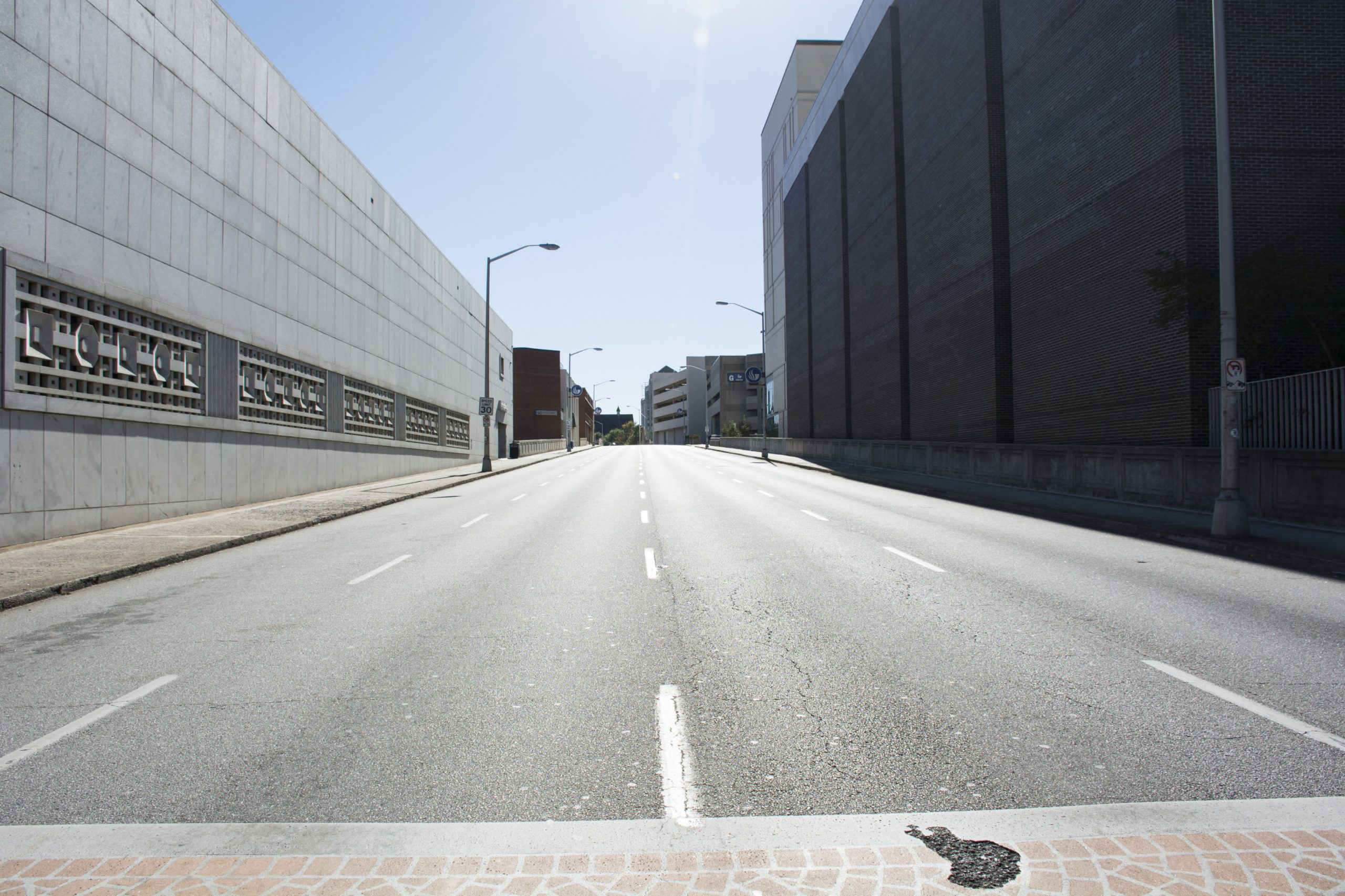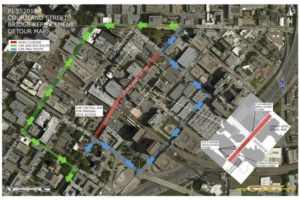
As the consolidated Atlanta campus overflowed parking decks early fall semesters, students complained of insufficient parking spaces. But starting September 2017, four more parking decks will be shut down as the city of Atlanta begins its re-construction of Courtland Bridge.
The Georgia Department of Transportation (GDOT) held its first “Detour Open House” and last open meeting for Courtland Bridge on Oct. 20 allowing citizens to voice their concerns as well as have project managers answer questions on the project.
The bridge, running from Gilmer St. SE to MLK Jr. Drive SW is currently under corrosion and the GDOT has installed protective netlines to prevent debris and falling cement from injuring anyone passing underneath.
The GDOT’s open house handout stated, “The bridge has been temporarily shored in the aea north of the CSX rail lines. However, the bottom of the concrete deck is spalling in numerous locations resulting in chunks of concrete falling off and endangering the public below. The City of Atlanta has installed netting underneath the bridge to catch falling debris until the bridge can be replaced”.
But the department plans on an entire shutdown of the passage for about 24 months with no set dates on the beginning and end of construction. The bridge will be torn down in a top-down type of demolition starting around September or October of next year, once a deal has been made with a contractor.
Xavier James, project manager, said the department is still in communications with the university as to how the student body may be affected.
“We plan to do a public outreach with the students on campus next semester,” he said. “Nothing formal, where we plan to put up a display and allow students to ask questions.”

The map of detours around Courtland Bridge shows a shut-down Colin St., which, according to James, will affect the four parking decks, C, G, E and H, located on that street. Decatur St. will remain open throughout construction to allow students alternative access to the buildings that have their entrance on the bridge.
“The only time we will have to shut down Decatur St. will be when they’re removing the beams,” James said. “That will be 15 to 20 minutes at a time, and will probably be at night-time or during the weekends.”
The only building that will be entirely shut down throughout the two-year construction process is the university’s ROTC center.
Scott Lee, member of the project, said the team is planning on holding its first public meeting at the university early spring semester in the Student Center. He said the reason it’s so lte is due to the fact that “a quarter of the student population” attending the school this semester will no longer be around next fall. But despite this being the first open house involving students, both James and Lee said Georgia State has been a part of the conversation since the beginning.
“We have engaged the university, we have a task force between this project and the university looking at the impacts,” Lee said. “The university is aware and we realize the university, unlike us, can reach out to the student body a lot more effectively than we can.”
The department said there are no plans to close MARTA or the CSX line during construction. G. Mark Hitchcock, an associate deputy practice leader for Mott MacDonald, an engineering and development consulting company said a lot of the tear-down procedures will be determined by the contractor with lowest bid price. There’s still a possibility that re-construction will take place in phases, which will affect less people at a time.
“We have no idea of their [bidder’s] methods,” he said. “If you don’t know what tools you have, you don’t know how you’re going to build it. They will have their ways of building resources, and optimize for time and labor costs.”
According to the project’s description handout, the reconstructed bridge will consist of four travel lanes, one 14’ lane and three 10’ lanes, as well as 6’ sidewalks. The costs of the project were approved in March 2015 by Georgia votes for a $250 million bond referendum, according to Saporta Report. Construction costs will take $20 million, utilities will take up $1 million, and right-of-way costs about another million.
